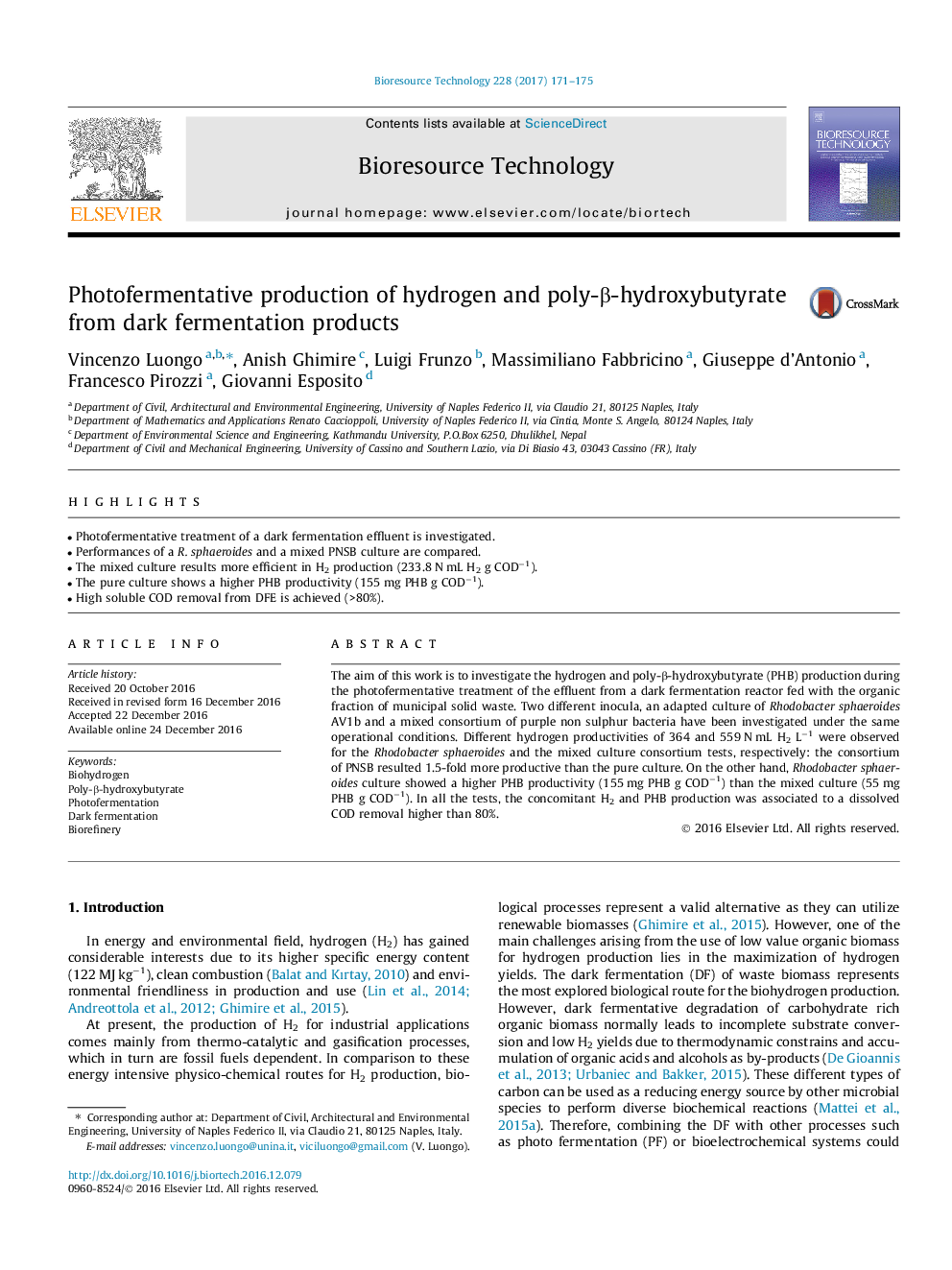| Article ID | Journal | Published Year | Pages | File Type |
|---|---|---|---|---|
| 4997733 | Bioresource Technology | 2017 | 5 Pages |
Abstract
The aim of this work is to investigate the hydrogen and poly-β-hydroxybutyrate (PHB) production during the photofermentative treatment of the effluent from a dark fermentation reactor fed with the organic fraction of municipal solid waste. Two different inocula, an adapted culture of Rhodobacter sphaeroides AV1b and a mixed consortium of purple non sulphur bacteria have been investigated under the same operational conditions. Different hydrogen productivities of 364 and 559 N mL H2 Lâ1 were observed for the Rhodobacter sphaeroides and the mixed culture consortium tests, respectively: the consortium of PNSB resulted 1.5-fold more productive than the pure culture. On the other hand, Rhodobacter sphaeroides culture showed a higher PHB productivity (155 mg PHB g CODâ1) than the mixed culture (55 mg PHB g CODâ1). In all the tests, the concomitant H2 and PHB production was associated to a dissolved COD removal higher than 80%.
Related Topics
Physical Sciences and Engineering
Chemical Engineering
Process Chemistry and Technology
Authors
Vincenzo Luongo, Anish Ghimire, Luigi Frunzo, Massimiliano Fabbricino, Giuseppe d'Antonio, Francesco Pirozzi, Giovanni Esposito,
